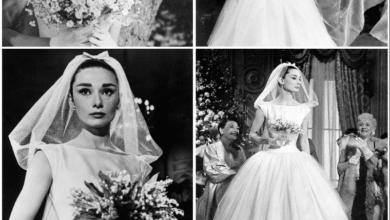The Untold Story of Marilyn Monroe’s Most Challenging Film—Why ‘Something’s Got to Give’ Was Her Breaking Point
OPINION: This article may contain commentary which reflects the author's opinion.
Marilyn Monroe remains one of Hollywood’s most iconic and tragic figures. Her films, though often remembered for her brilliance and star power, also reflect the immense challenges she faced both professionally and personally. One film that stands out as her toughest—and arguably most heartbreaking—project is Something’s Got to Give (1962). Although Monroe’s career featured several demanding productions, it was this unfinished film that encapsulated the personal and professional turmoil she was enduring, ultimately becoming the last project she worked on before her untimely death.
Marilyn Monroe’s Own Words: Reflections on Something’s Got to Give
Monroe’s own reflections on the difficulties she encountered during her career shed light on the struggles she faced during the production of Something’s Got to Give. In an interview with Life magazine in August 1962, she discussed the burdens of fame and the personal toll it took on her. While she did not explicitly label Something’s Got to Give as her toughest project in the interview, the context surrounding the film—particularly the obstacles she faced during its production—suggests it was a significant struggle for the star.
Monroe was known for her candidness, and the Life magazine conversation captured her frustrations, especially as her health deteriorated. Despite the challenges, she remained committed to completing the film, revealing the strain her career placed on her physical and emotional well-being. The film, which had a tumultuous production process, was one of the last projects Monroe worked on, making it a defining moment in her career.
Production Challenges: Health Issues and Studio Conflicts
The production of Something’s Got to Give, directed by George Cukor and intended as a remake of the 1940 film My Favorite Wife, was plagued by multiple setbacks. According to sources like Something’s Got to Give – Wikipedia, Monroe’s absence from the screen for over a year, coupled with health complications—most notably her gallbladder surgery—delayed filming. She was reportedly 25 pounds under her normal weight, further exacerbating the production delays.
In addition to these health issues, Monroe’s personal life was also in turmoil. Her strained relationships, including her marriage to playwright Arthur Miller, contributed to her emotional instability, which in turn affected her professional life. The film was disrupted by frequent absences from Monroe, who was often too ill or too distraught to continue working. Ultimately, in June 1962, she was fired from the film, though efforts to rehire her were underway before her sudden death in August of that year. This unfinished project remains one of the most poignant and frustrating aspects of Monroe’s career.
Unfinished Business: The Gloom of Something’s Got to Give
Something’s Got to Give was never completed, and much of the footage went unseen for decades. Documentaries like Marilyn: Something’s Got to Give (1990) focus on the last days of Monroe’s life and work, detailing how the film’s production was a microcosm of the struggles she faced during her final years. According to The Independent, Monroe’s firing from the film, just months before her death, further compounded her personal and professional hardships. The documentary and subsequent media coverage highlighted the emotional and psychological toll of a project that was supposed to showcase Monroe’s star power but instead became a symbol of her decline.
Comparative Context: The Misfits and Some Like It Hot
While other films in Monroe’s career were similarly challenging, none quite matched the significance of Something’s Got to Give. The Misfits (1961), for instance, was a painful experience due to her deteriorating marriage to Arthur Miller and the emotional strain of the production. However, Something’s Got to Give stands out due to its unfinished nature and the extreme personal and professional challenges Monroe faced in bringing it to life. The film’s production delays and the public scrutiny of Monroe’s health and personal life added a layer of tragedy to an already difficult process.
Films like Some Like It Hot (1959), which is often hailed as one of Monroe’s greatest works, lack the same documented production struggles. While Some Like It Hot showcased her comedic genius and charm, it did not carry the same emotional and physical weight as Something’s Got to Give, which remains an incomplete testament to the obstacles Monroe faced as an artist.
Conclusion: The Toughest Movie of Marilyn Monroe’s Career
While many of Monroe’s films are remembered for their cultural impact and her iconic performances, Something’s Got to Give stands as the toughest film she ever worked on. The numerous production delays, health issues, and personal struggles that surrounded the film’s creation ultimately defined it as a symbol of her personal and professional battles. Even though the film was never completed, its legacy endures as a reminder of Monroe’s vulnerability and the complex pressures she faced throughout her career.
Monroe’s reflections, alongside the documented challenges of Something’s Got to Give, paint a picture of a star who, despite facing insurmountable difficulties, continued to fight for her craft until the very end.



